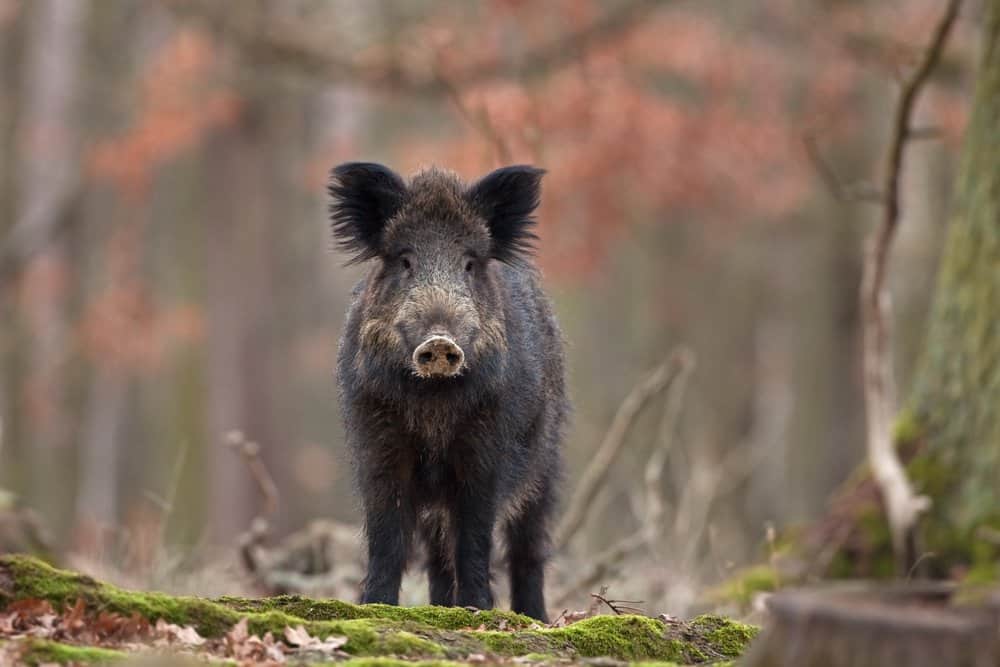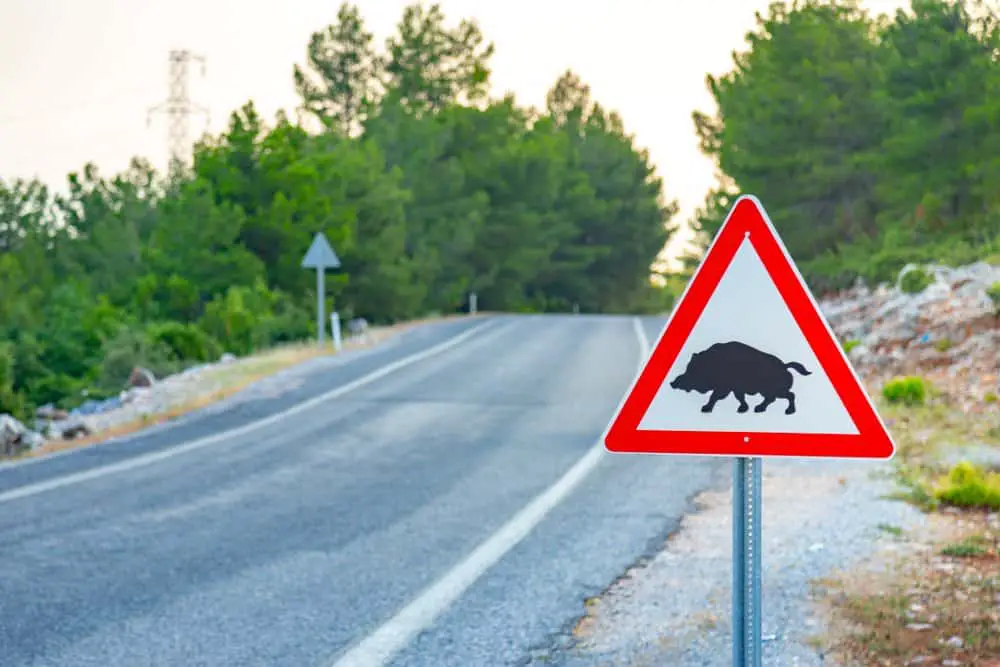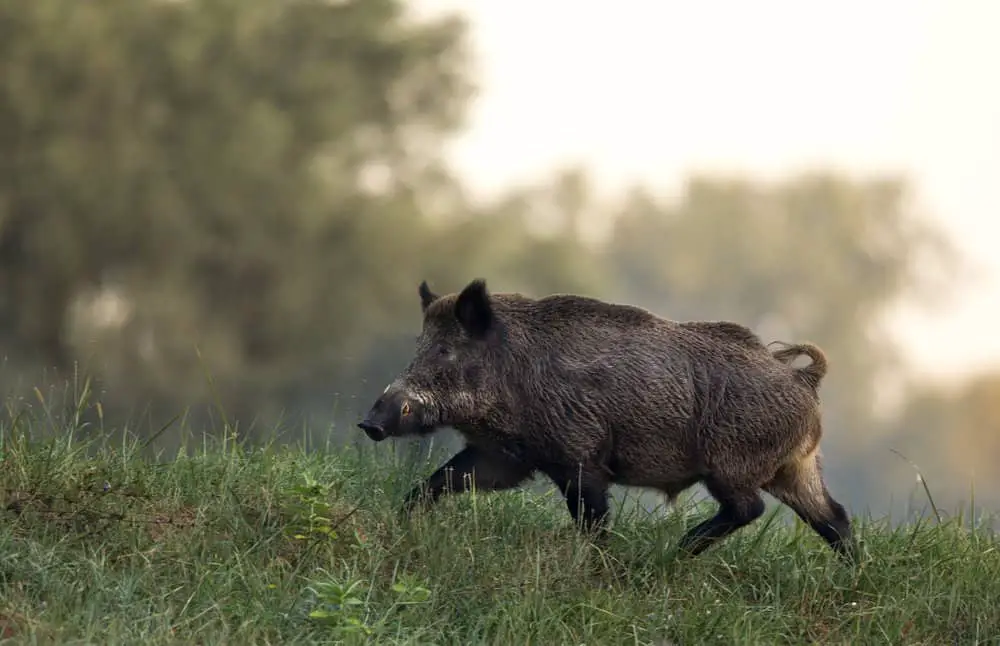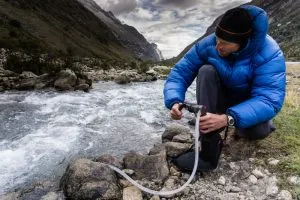What To Do If You See A Wild Boar While Hiking

Whether you call them wild boars, feral hogs, wild hogs, or feral pigs, these animals can pose a serious threat to your safety while you’re out on the trail.
Wild Boars are growing in numbers and rapidly expanding their territory in North America, especially here in Texas. They are known to be very aggressive, and if you see a wild boar while you’re hiking, it’s important to know what to do.
Quick Links
What Are Wild Boars?
Wild hogs are a hybrid of the domestic hog and the European wild boar. They have longer legs, tusks, and hair than domestic pigs, and they’re usually much more aggressive. They can weigh anywhere from 50 to 400 pounds, and they can run up to 30 miles per hour.
Color-wise, they can be brown, black, or red, and they usually have a lighter-colored stripe down their back.
Essentially, fully-grown wild hogs are like mini tanks with deadly tusks. Sounds fun, right?
So, where do you often find wild boars and hogs?
Where Are Wild Boars Found?
They’re found all over North America, but they’re most commonly found in the southeastern United States, specifically Texas.
Originally, feral hogs came from European wild boars that were brought to Texas in the 1500s.
Now, there are an estimated 6 million feral hogs in the United States, and their population is growing.
And according to the NY Times, half of the 6 million feral pigs in the US live in Texas. However, it’s not just Texas. In the past 30 years, they’ve expanded from 17 states to 38. Quite a jump.
Unfortunately, many people also believe this expansion is due to the fact that people are illegally transporting hogs for hunting purposes.
So if you’re hiking in New York, you don’t have much to worry about. But if you’re hiking in Texas, it’s important to be on the lookout for these animals. I’ve seen a few while driving through my neighborhood around Houston, and I’m not even in a rural area.
Where Does a Wild Boar Typically Hang out On the Trails?
They typically stay in wooded areas or near water sources, but they have been known to wander into open spaces too.
In warmer climates, they tend to stay near wet & muddy areas to cool off. But of course, they’ll usually end up concentrating in areas with lots of accessible food.
These animals are also nocturnal, so you’re more likely to see them at night. However, it doesn’t hurt to be aware during the daytime as well. As I said, the few times I saw them were in the middle of the day.
What Should You Do if You See a Wild Boar While Hiking?

If you see a wild boar while you’re hiking, the first thing you want to do is assess the situation. If the hog is far away and doesn’t seem to be bothered by your presence, you have two options. Either continue on your hike and hope you don’t cross paths or change your route entirely. I would err on the side of caution and choose the latter. Wild Boars are known to be very territorial animals. As a matter of fact, most wildlife you’ll encounter while hiking are pretty territorial creatures.
If the hog is closer to you or seems agitated, your best bet is to slowly back away. Whatever you do, don’t turn your back on the animal or run away. Just like coyotes, they may view this as a challenge, and they will likely come after you.
Secondly, don’t run. I know this is instinctual, but it will only make the situation worse. Boars are pretty fast on their feet, and they will catch up to you if you try to outrun them. Like with most animals, the moment you start running is when their hunting & chasing instinct kicks in.
Lastly, don’t try to win over its heart with food. I know we’re programmed to think that if an animal is hungry, we can just give it some food, and it’ll be on its merry way. But this doesn’t work with wild hogs. In fact, feeding them will only make the problem worse. And this goes with pretty much ALL wildlife – don’t feed them.
Do Wild Boars Attack Humans?
In short, yes.
While most animals will only attack humans if they’re provoked, wild boars are known to be much more aggressive. Many have even claimed that wild boars attack people for no reason – which just simply isn’t true.
Typically, most attacks will happen when the hog feels threatened. This could be because you’re too close to its young, you might have accidentally startled it, or you’ve unknowingly entered into its den.
There have been quite a few reported cases in the news of people being attacked by wild hogs. In total, there have also been five documented fatalities from wild boar attacks since 1825. So while it may not seem like a lot, it’s still five too many.
And even though these are nocturnal creatures, as I mentioned earlier, a 2014 study on wild boars found that most attacks on humans took place during the daytime, especially during the morning and late afternoon.
What Should You Do if a Wild Boar Charges At You?

If a wild boar does attack you, the best thing you can do is try and get to a safe place. If you’re out hiking in the middle of nowhere, your best bet is to climb a tree. I know this sounds like something out of a movie, but it could save your life. Pigs can’t look up, nor can they climb trees, so you’ll be safe until help arrives.
If there’s nowhere to climb, then try and find something to use as a weapon. This could be a large stick, a rock, or even your hiking poles if you have them. The goal is to just get the hog away from you, so whatever you can find will do.
And if all else fails, then just try and cover yourself as much as possible. Put your backpack in front of you, fight back if you have to, and just wait for it to go away.
Most wild pig attacks are short-lived. They tend to charge head first with their tusks, bite, and then back off. So if you can just weather the storm, you’ll be okay.
How to Avoid an Attack in The First Place
The best way to avoid an attack is by being aware of your surroundings. If you’re hiking in areas known to have wild boars, then make sure you’re paying attention to where you step. Keep your eyes peeled for fresh footprints; if you see any, just turn around and go the other way.
Some of the other signs of a feral boar nearby are rooting, wallowing, rubs, and even droppings. Wallowing is when they roll around in the mud to cool off, and rubs are when they scratch their back on trees. So if you see any of these signs, it’s best just to leave the area. Droppings are, well, their poop.
Second, consider carrying a whistle with you. You can use it to startle the hog if it’s getting too close for comfort, and it might just be enough to scare it off.
You should also avoid hiking alone if possible, especially in an area known for feral hogs. There’s always safety in numbers, so having someone with you will make it that much harder for an attack.
And lastly, stay calm if you come face to face with a wild hog. Like I said before, they can sense when you’re afraid, and that’s usually when they’ll attack. So just act casual, don’t run, and hopefully, it will just go away.
Conclusion
Wild boars can be dangerous, but if you know what to do, then you’ll be fine. Remember to stay alert, and don’t run if you encounter one. And if you’re going hiking in an area known for them, then consider carrying something to make some noise with and going with a group.
Have you had any close encounters with a wild boar? Would love to hear about it in the comments below.






